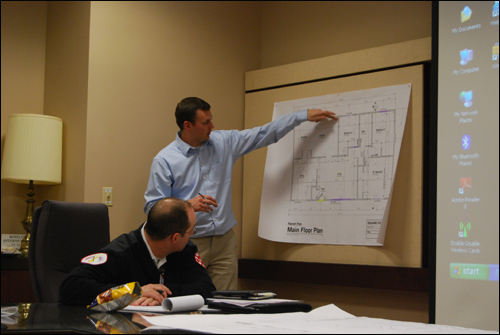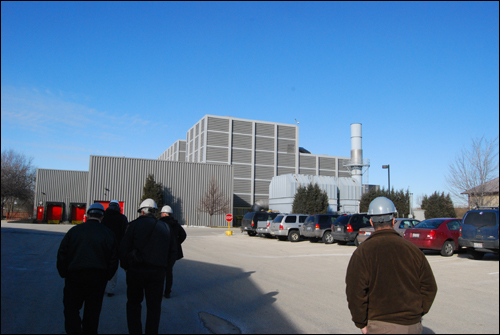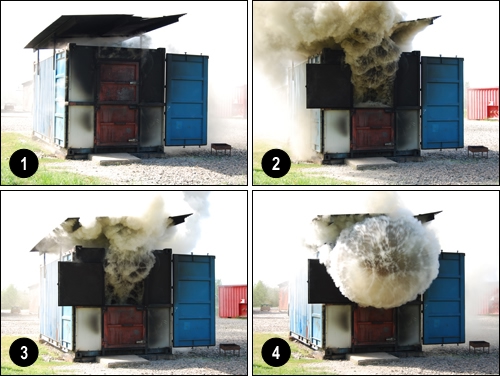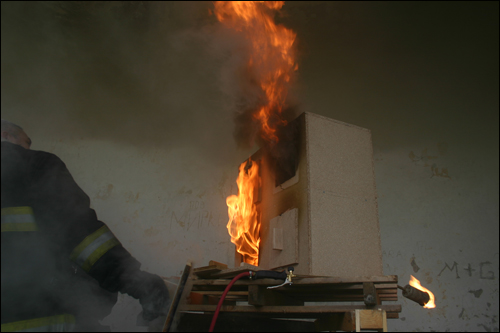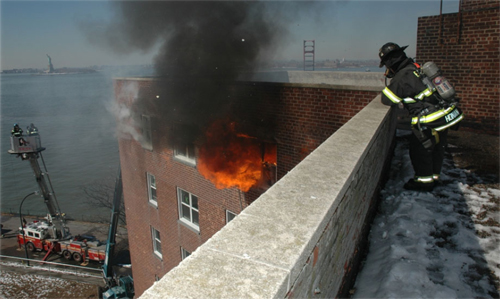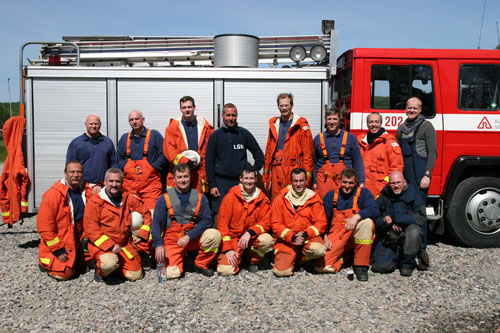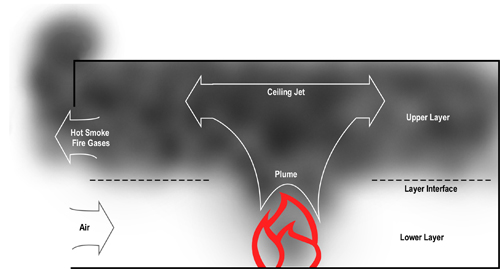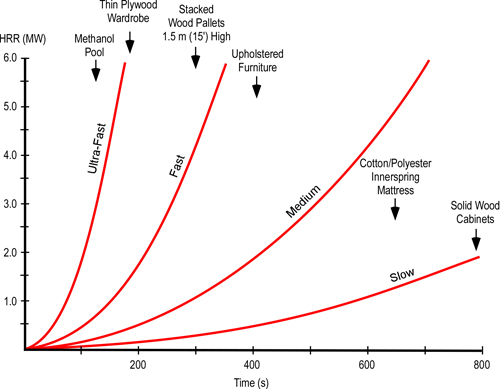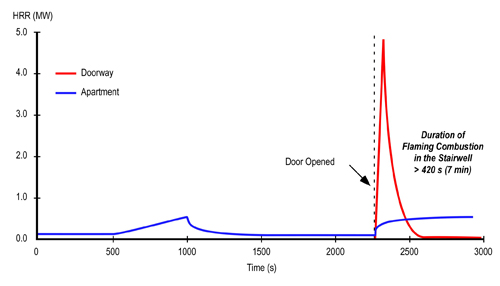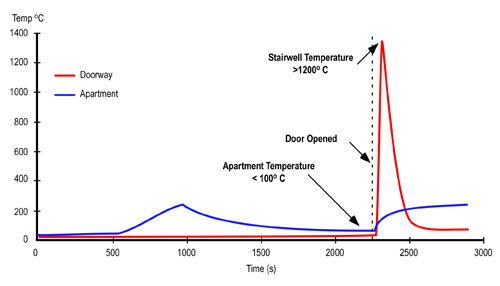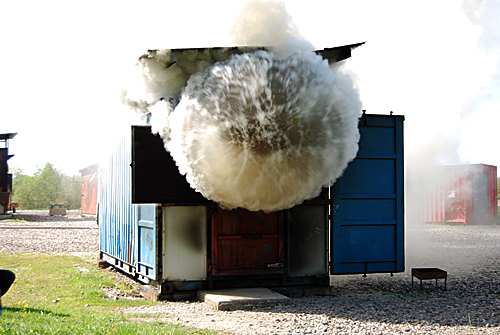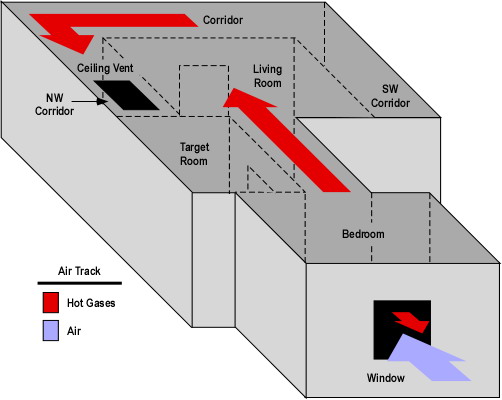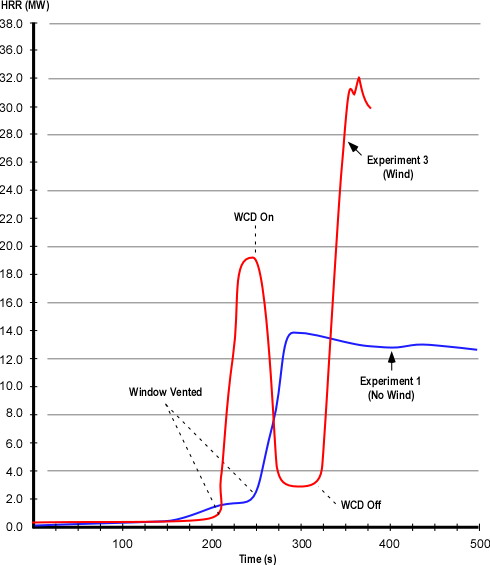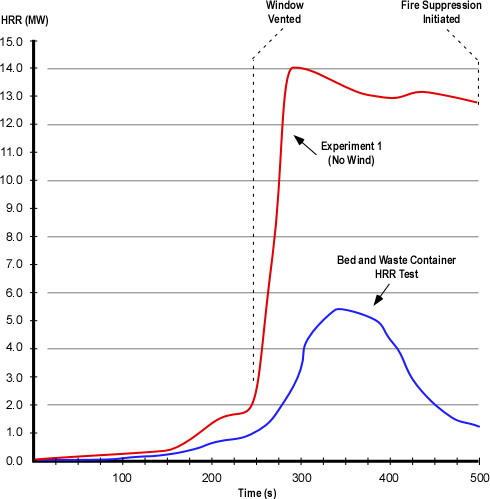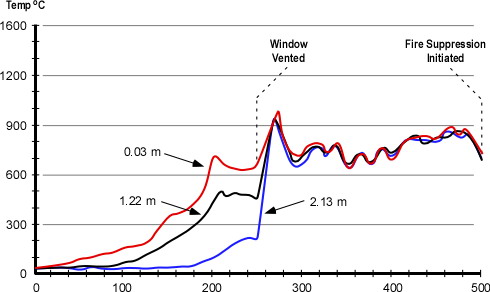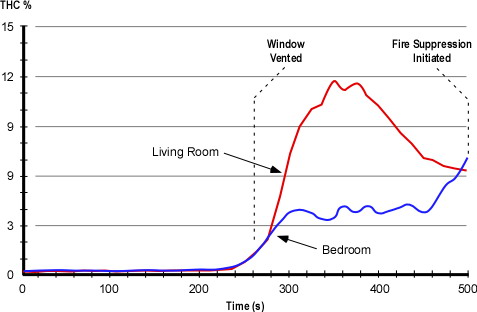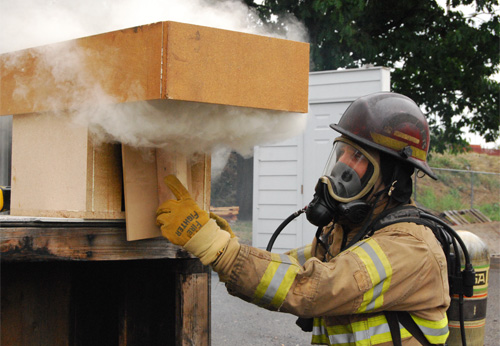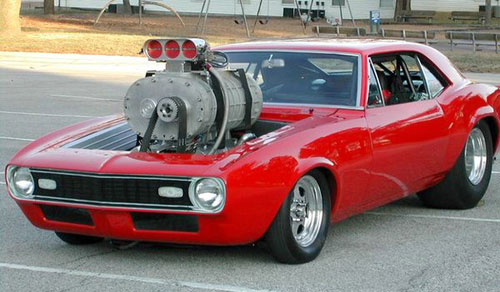UL Vertical Ventilation Study
Tactical Implications
Wednesday, July 17th, 2013
Even as a member of the technical panel on the UL Vertical Ventilation Study, it will take some time to fully digest all of the data presented in the Study of the Effectiveness of Fire Service Vertical Ventilation and Suppression Tactics in Single Family Homes (Kerber, 2013). However, the tactical implications presented in this report provide an excellent starting point to understanding the influence of vertical ventilation on fire behavior and other important findings in this research project. UL will also be releasing an on-line training program in the near future that will provide a user friendly approach to exploring this information.
Read the Report and Stay up to date with the latest UL research with the fire service by connecting with the Firefighter Safety Research Institute on the web or liking them on Facebook.
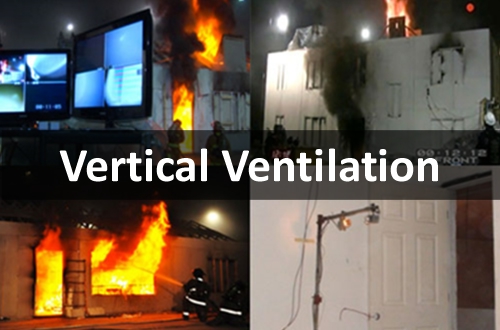
Tactical Implications
A number of the tactical implications identified in the vertical ventilation study replicate and reinforce those identified when UL studied the effect of horizontal ventilation. Other implications are specifically focused on vertical ventilation. The following summary examines and expands slightly on the tactical implications presented in Study of the Effectiveness of Fire Service Vertical Ventilation and Suppression Tactics in Single Family Homes (Kerber, 2013).
The Fire Environment Has Changed: While many firefighters, particularly those who have less than 15 or 20 years of service have never known a fire environment fueled by synthetic materials with rapid fire development and ventilation limited fire conditions. However, many of the tactics in use today were developed when the fire environment was quite different. Decades ago the fire environment was predominantly fueled by natural materials; fires had a lower potential heat release rate, and remained fuel controlled much longer. Changes in the fire environment require reevaluation and shift of tactics to meet these changes.
Control the Access Door: If a fire is ventilation limited, additional oxygen will increase the heat release rate. The entry point is a ventilation opening that not only allows smoke to exit, but also provides additional atmospheric oxygen to the fire, increasing heat release rate and speeding fire development. Controlling the door slows fire development and limits heat release rate. Once the fire attack crew has water on the fire and is limiting heat release by cooling the door can and should be opened as part of planned, systematic, and coordinated tactical ventilation.
Coordinated Attack Includes Vertical Ventilation: While vertical ventilation is the most efficient type of natural ventilation, it not only removes a large amount of smoke, it also introduces a large amount of air into the building (the mass of smoke and air out must equal the mass of air introduced). If uncoordinated with fire attack, the increase in oxygen will result in increased fire development and heat release. However, once fire attack is making progress, vertical ventilation will work as intended, with effective and efficient removal of smoke and replacement with fresh air.
Large Vertical Vents are Good, But… Ventilation (either horizontal or vertical) presents a bit of a paradox. Hot smoke and fire gases are removed from the building, but the fresh air introduced provides oxygen to the fire resulting in increased heat release rate. A 4’ x 8’ ventilation opening removed a large amount of hot smoke and fire gases. However, without water on the fire to reduce the heat release rate and return the fire to a fuel controlled regime, the increased air supply caused more products of combustion to be released than could be removed through the opening, overpowering the vertical vent and worsening conditions on the interior. Once fire attack returned the fire to a fuel controlled regime, the large opening was effective and conditions improved.
Location of the Vertical Vent? It Depends! The best location for a vertical ventilation opening depends on building geometry, location of the inlet(s) and resulting flow path. Often this is not known with certainty. If ventilation and fire attack are coordinated, venting over the fire provides the most efficient flow of hot smoke, fire gases, and air. However, while not mentioned in this report on vertical ventilation, working above engineered wood roof supports that are involved in fire or may have been damaged by the fire presents considerable risk. Surprisingly vertical ventilation remote from the fire provided some positive effects, but this was dependent on geometry. One of the important lessons in this tactical implication is that the effects of vertical ventilation are not only dependent on the location of the exhaust opening, but also on the location of the inlet and resulting flow paths created within the building.
Operations in the Flow Path Present Significant Risk: In UL’s tactical implication titled Stages of Fire Growth and Flow Path, Steve Kerber states “the stage of the fire (i.e. ventilation or fuel limited)”. This may be a bit confusing as the stages of fire development are typically described as ignition or incipient, growth, fully developed, and decay. Burning regime may be used to describe the conditions of fuel or ventilation controlled (although this term is used in the text 3D Firefighting, it is not as commonly used in fire dynamics literature). The location of the inlet and exhaust openings, distance between the inlet opening and the fire, shape of the inlet and exhaust openings, the interior geometry of the building and its contents all impact on flow path and the availability of oxygen for fire growth. Firefighters must consider both the upstream (between the inlet and the fire) and downstream (between the fire and the exhaust) elements of the flow path. Operations in the downstream segment of the flow path are hazardous due to the flow of hot gases and smoke, increasing convective heat transfer and potential for fire spread in this space.
Timing is (Almost) Everything: Why do we perform tactical ventilation? While firefighters can typically provide a list of potential benefits, one of the most important is to improve interior conditions for both firefighters and victims who may still be in the building. When effective tactical ventilation is coordinated with fire attack, the fire environment becomes cooler, visibility is increased, and useful flow paths are created that remove hot smoke, fire gases, and steam ahead of hoselines. However, tactical ventilation completed significantly before fire attack is having an effect on the fire can result in increased heat release rate and fire growth. Additional considerations that impact or are impacted on by timing of tactical ventilation include:
- The fire does not react to additional air (oxygen) instantaneously
- The higher the interior temperatures the faster the fire reacts
- The closer the inlet opening is to the fire the faster it reacts
- The higher the exhaust opening the faster the fire reacts
- The more smoke exhausted from the building the more air that is introduced (the mass of air in must equal the mass of smoke and air that is exhausted)
- The more air (oxygen) the faster the fire reacts
Reading The Fire: The UL report on vertical ventilation refers to “Reading Smoke”. While smoke is a critical category of fire behavior indicators, firefighters must consider all of the B-SAHF indicators (Building, Smoke, Air Track, Heat, and Flame) when reading the fire. The key point made in the UL vertical and horizontal ventilation reports is that nothing showing means exactly that. Nothing! As a fire becomes ventilation controlled, temperature decreases, reducing pressure in the building and as a result visible smoke indicators on the exterior often are substantially diminished or absent. When little or no smoke are observed, the fire should be treated as if it is in the ventilation limited, decay stage until proven otherwise.
Closed Doors=Increased Potential for Survival: As with UL’s horizontal ventilation experiments, the vertical ventilation experiments further demonstrated that closed doors increase victim survivability. . In each experiment a victim in the closed bedroom would have had survivable conditions and would have been able to function well through every experiment and well after the arrival of fire companies. In the bedrooms with open doors, potential victims would be unconscious if not deceased prior to fire department arrival or as a result of fire ventilation actions.
Softening the Target: In many cases, the fire has self-vented prior to the arrival of the first company (note that self-vented should not be confused with adequate, planned, systematic, and coordinated tactical ventilation). Tactical implications presented in Impact of Ventilation on Fire Behavior in Legacy and Contemporary Residential Construction (Kerber, 2010) indicated that a self-vented fire most likely will most likely be ventilation controlled and will respond quickly to any increase in ventilation.
Even with a ventilation location open the fire is still ventilation limited and will respond just as fast or faster to any additional air [oxygen]. It is more likely that the fire will respond faster because the already open ventilation location is allowing the fire to maintain a higher temperature than if everything was closed. In these cases rapid fire progression is highly probable and coordination of fire attack with ventilation becomes even more important (Kerber, 2010, p. 301).
Data on the effects of water application from the exterior during the vertical ventilation experiments reinforced the conclusions drawn from those conducted during the horizontal ventilation study. Regardless of the point of application, water quickly applied into the fire compartment improved conditions throughout the entire building. In the vertical ventilation experiments water applied from the exterior for approximately 15 seconds had a significant impact on interior conditions increasing potential for victim survivability and firefighter safety. During size-up consider the fastest and safest way to apply water to the fire. This could be by applying water through a window, through a door, from the exterior or from the interior.
You Can’t Push Fire with Water: During the vertical ventilation study, UL continued examination of the question; can water applied from a hoseline push fire? Data from this study continues to support the position that application of water does not push fire. However, discussion during the study pointed to several situations that may give the appearance of fire being pushed.
- A flow path is changed with ventilation and not water application
- A flow path is changed with water application
- Turnout gear becomes saturated with energy and passes through to the firefighter
- One room is extinguished, which allows air to entrain into another room, causing the second room to ignite or increase in burning (see Contra Costa LODD: What Happened? for an example of this phenomena)
Direct Attack is Important on Fires in Large Spaces: While large open floor plans in many modern homes presents a fire suppression challenge, open floor plans also permit application of water to burning fuel from a distance. This tactical recommendation points to the importance of using the reach of a hose stream to advantage. It is not necessary to be in the fire compartment to begin effective suppression. If an involved room is in line of sight, water can be applied to burning fuel with good effect.
Important! While not addressed in this tactical implication, the emphasis on direct attack does not diminish the importance of cooling the hot smoke and gases (fuel) in the upper layer as a control (not fire extinguishment) measure, particularly when the fire is shielded and not accessible for direct attack.
Ventilation Doctrine
Just as with door control (an anti-ventilation tactic) it is important to extend the concept of consistent doctrine to the broader context of tactical ventilation and anti-ventilation strategies and tactics. This doctrine is likely to differ based on context (e.g., building sizes and types and firefighting resources), but the fire dynamics framework will likely be quite similar. Future posts will work to examine the vertical ventilation study in more detail and to also integrate the tactical implications from this study with those from the earlier vertical ventilation study. These two important studies don’t answer all of the questions, but provide a good start.
References
Kerber, S. (2010). Impact of ventilation on fire behavior in legacy and contemporary residential construction. Retrieved July 17, 2013 from http://www.ul.com/global/documents/offerings/industries/buildingmaterials/fireservice/ventilation/DHS%202008%20Grant%20Report%20Final.pdf.
Kerber, S. (2013). Study of the effectiveness of fire service vertical ventilation and suppression tactics in single family homes. Retrieved July 17, 2013 from http://ulfirefightersafety.com/wp-content/uploads/2013/06/UL-FSRI-2010-DHS-Report_Comp.pdf



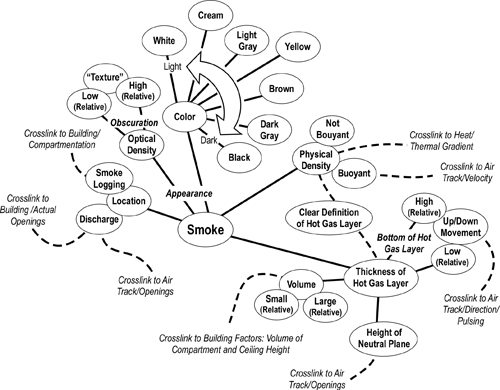
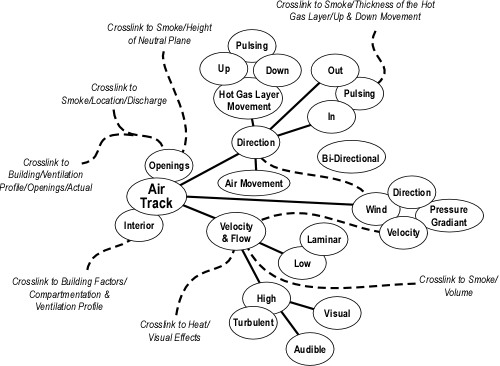
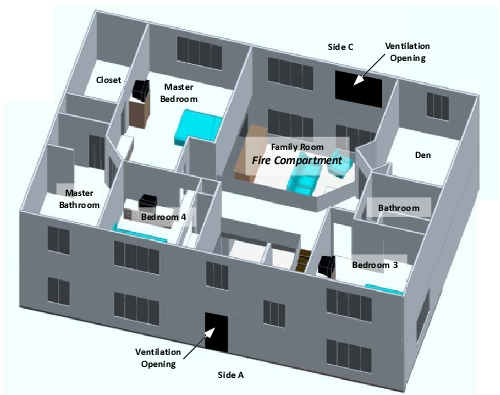
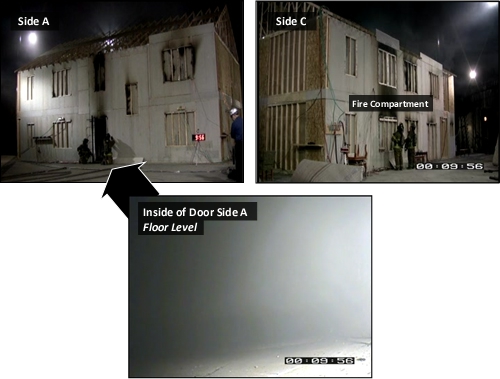
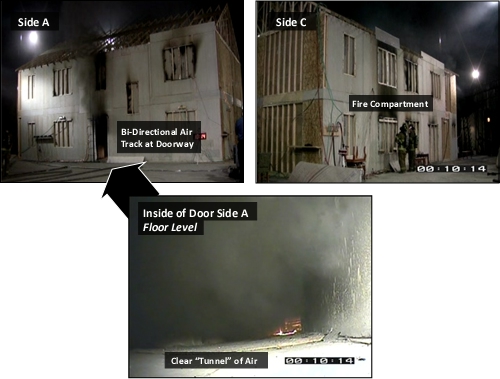
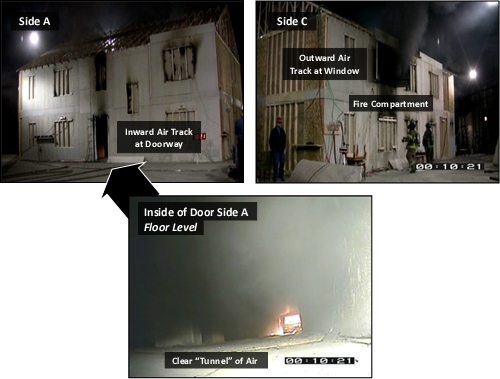
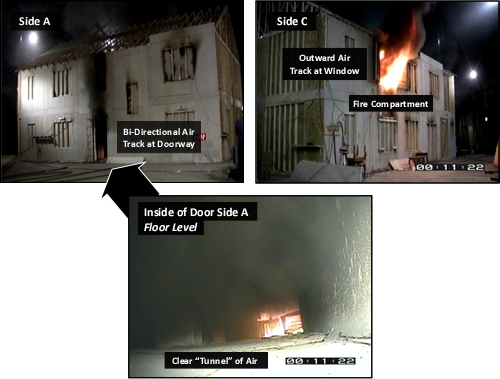
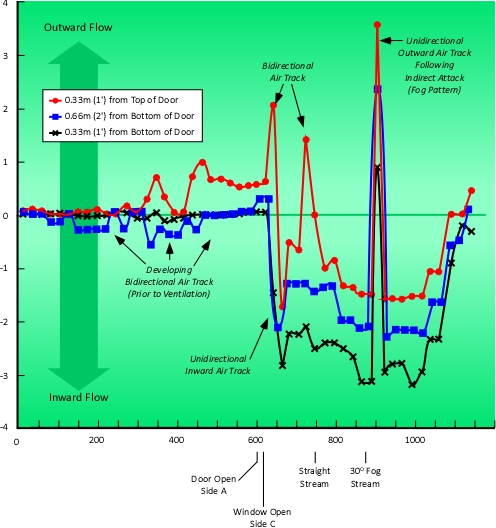 Note: Adapted from
Note: Adapted from 